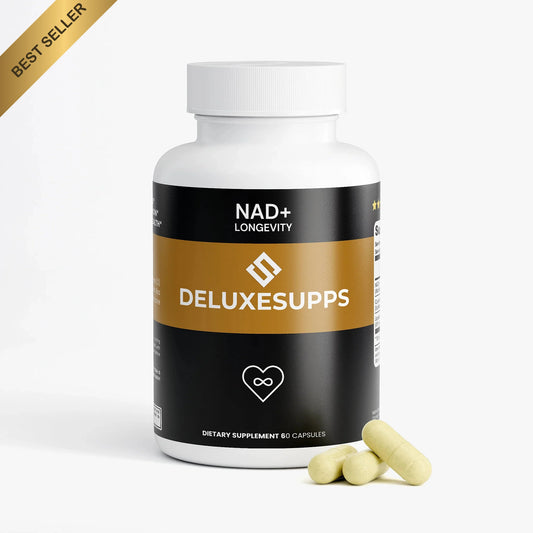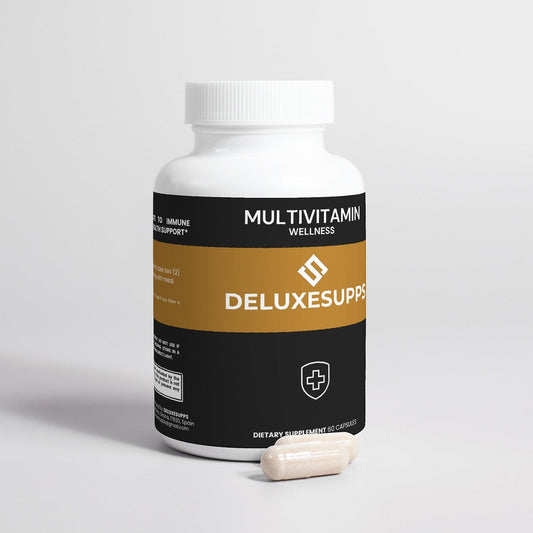Updated on: 2025-11-20
Table of Contents
- Understanding the Stress Relief Adaptogen Basics
- Product Spotlight: A Stress-Relieving Adaptogen in Focus
- Did You Know? Facts About Stress-Relieving Adaptogens
- Pros and Cons of a Stress Relief Adaptogen
- How to Use Adaptogens for Stress Relief in a Routine
- Choosing a Stress Relief Adaptogen: Practical Guide
- FAQ: Adaptogen for Stress Relief
- Conclusion and Next Steps
- About the Author
Understanding the Stress Relief Adaptogen Basics
A stress relief adaptogen is a plant-derived ingredient discussed for its traditional role in supporting balance during everyday pressures. In practical terms, people explore an adaptogen for stress relief to help maintain a steady routine, remain focused, and manage busy schedules. These botanicals are often positioned as tools for composure and clarity rather than quick solutions. When evaluating any stress-relieving adaptogen, it is helpful to look at quality markers such as plant species, part used, extraction method, and consistent serving information on the label. This article provides a neutral overview to help you assess options and decide how a product might fit into your day.
Adaptogens have roots in long-standing wellness traditions. Today, they appear in capsules, powders, gummies, and functional blends. Formats differ in convenience, taste, and typical serving sizes, so selecting the right form depends on your routine. Because individuals respond in personal ways, many people prefer a measured, steady approach and track how a product aligns with sleep, focus, and daily rhythm over time.
Product Spotlight: A Stress-Relieving Adaptogen in Focus
Why Consumers Consider Ashwagandha for Stress Relief
Ashwagandha is one of the most discussed botanicals in this category. Many shoppers look for ashwagandha for stress relief because it is widely recognized and available in standardized extracts and whole-root forms. Standardization aims to deliver a consistent range of active constituents from batch to batch, which helps with predictability across servings. While individual expectations vary, interest often centers on steady routine support, calm focus, and a composed approach to daily tasks.
If you are comparing options, capsule-based formulas are popular for their clarity in serving size and portability. For a concise, single-ingredient choice, consider reviewing Ashwagandha and its label details, including serving size, extract type if applicable, and any notes on sourcing or third-party testing.
What to Look For in a Stress Relief Adaptogen Formula
When evaluating a stress relief adaptogen formula, look for the botanical species name, plant part, and format (extract or powder). Clear serving directions, allergen statements, and storage guidance can improve confidence. Many consumers also seek products that are produced in facilities following recognized quality standards, with transparent batch coding for traceability. If you prefer a blend, some formulas combine adaptogens with functional mushrooms or botanicals to create a broader profile. A curated mushroom blend, for example, may align with a steady routine by pairing adaptogenic herbs with functional fungi; options such as a concentrated Mushroom Complex can be reviewed for their ingredient lists and serving formats.
Did You Know? Facts About Stress-Relieving Adaptogens
- Adaptogens are typically described as botanicals that help maintain balance during everyday pressures, emphasizing steady routines rather than rapid shifts.
- Common names include ashwagandha, rhodiola, tulsi, and schisandra; each has its own sourcing regions, plant parts, and traditional uses.
- Standardized extracts aim to provide consistent levels of active constituents, while whole-herb formats offer a broader plant profile.
- People often search for “best stress relief adaptogens for anxiety” to compare ingredient lists, formats, and serving practices without expecting instant changes.
- Labels with batch numbers, plant species, and extraction ratios can help buyers compare products across brands.
Pros and Cons of a Stress Relief Adaptogen
- Pros
- Widely available in simple formats (capsules, powders, gummies) for flexible routines.
- Clear serving sizes make it easier to track personal response over time.
- Standardized extracts can improve consistency from bottle to bottle.
- Neutral profile that pairs well with general wellness habits such as sleep hygiene and light activity.
- Cons
- Individual experiences vary; expectations should remain measured and patient.
- Quality and standardization differ by brand; careful label review is essential.
- Blends may complicate tracking because multiple ingredients change variables at once.
- Routine benefits typically require consistent use; sporadic intake may be harder to evaluate.
How to Use Adaptogens for Stress Relief in a Routine
Many readers ask how to use adaptogens for stress relief with clarity and structure. The steps below offer a practical framework to organize your approach. These steps are for general information only and do not replace professional guidance.
Identify Goals and Context
Define what you hope to observe in your day-to-day life. Some people look for steady energy across busy workdays, smoother transitions between tasks, or calmer evenings. A clear goal helps you evaluate if a specific stress relief adaptogen aligns with your needs.
Review Quality and Labels
Check species, plant part, format, and serving details. Look for transparent ingredient lists and straightforward directions. This helps you compare options and set consistent serving times.
Start Low and Keep Consistency
Begin with the labeled serving, or as directed by the product, and follow a regular schedule. Consistency supports clearer observation. Many people track notes for two to four weeks and adjust only one variable at a time.
Pair with Balanced Habits
Simple changes can support your routine. Examples include regular hydration, structured breaks, light movement, and calm pre-sleep rituals. These habits can make it easier to notice patterns when you introduce a stress-relieving adaptogen.
Track and Adjust
Note the time of day you take the product, the format, and any observations about your schedule. If you try a blend, track ingredients so you can evaluate which component fits your goals. This approach helps you settle on a steady routine or explore other options if needed.
Choosing a Stress Relief Adaptogen: Practical Guide
Selection begins with clarity on desired qualities. If you prefer a single-ingredient option with broad recognition, ashwagandha for stress relief is a common starting point. If you value a more energizing daytime profile, you may explore rhodiola benefits for stress discussions to understand how users describe their experience in busy hours. If you enjoy functional mushroom blends, a curated formula might fit your routine paired with morning hydration or a midday break.
Here are factors to compare when choosing a stress relief adaptogen:
- Format and Convenience: Capsules offer precise servings and portability. Powders blend into smoothies or warm beverages if you prefer flexible timing.
- Standardization: Look for consistent extract ratios or stated marker compounds when predictability is important.
- Single vs. Blend: Single botanicals simplify tracking. Blends offer breadth but can make it harder to pinpoint which component aligns best with your goals.
- Routine Fit: Consider morning or evening use based on your schedule and how you wish to structure your day.
- Label Clarity: Favor transparent labels with serving directions, ingredient sources where noted, and batch coding.
If you want a streamlined path, explore a curated collection to compare formats and serving details in one place. You can review ingredient panels and choose the profile that fits your goals across All products or use a guided tool to combine items that match your routine via Create your bundle.
FAQ: Adaptogen for Stress Relief
What are adaptogens and how do they help with stress relief?
Adaptogens are botanicals discussed for their traditional role in supporting balance during daily pressures. A stress relief adaptogen is typically used with the goal of maintaining a steady routine and composed mindset. People include them in a consistent schedule and track how they feel over time in relation to daily rhythms.
Which adaptogens are most effective for stress relief?
There is no single answer because experiences vary. Commonly discussed choices include ashwagandha and rhodiola. Many readers compare ashwagandha for stress relief and rhodiola benefits for stress to see which aligns with daytime or evening preferences. It is helpful to review label details, start with a consistent schedule, and assess personal fit over several weeks.
How do you use adaptogens for stress relief?
Choose a clear format, follow the product’s serving directions, and track timing and observations. People often pair a stress-relieving adaptogen with simple habits such as hydration, planned breaks, and consistent sleep routines. Keeping variables steady makes it easier to evaluate whether the product supports your daily goals.
Conclusion and Next Steps
A stress relief adaptogen can be a structured addition to a thoughtful routine. By focusing on quality, label clarity, and consistent use, you can evaluate how a product aligns with your personal goals. If you prefer a single-ingredient option, consider a focused capsule with clear serving guidance such as Ashwagandha. If you enjoy a broader profile, review a concentrated blend like Mushroom Complex and compare ingredient lists.
To browse, compare, and build a consistent plan, visit All products or tailor your selections with Create your bundle. Keep your approach steady, track observations, and refine your routine with confidence.
About the Author
Deluxesupps Deluxesupps
Deluxesupps Deluxesupps writes about botanicals, functional nutrients, and practical routines for calm, steady days. With a focus on product quality, label literacy, and everyday structure, the guidance is clear and actionable. Thank you for reading, and feel free to explore more topics that support your routine.
The content in this blog post is intended for general information purposes only. It should not be considered as professional, medical, or legal advice. For specific guidance related to your situation, please consult a qualified professional. The store does not assume responsibility for any decisions made based on this information.












